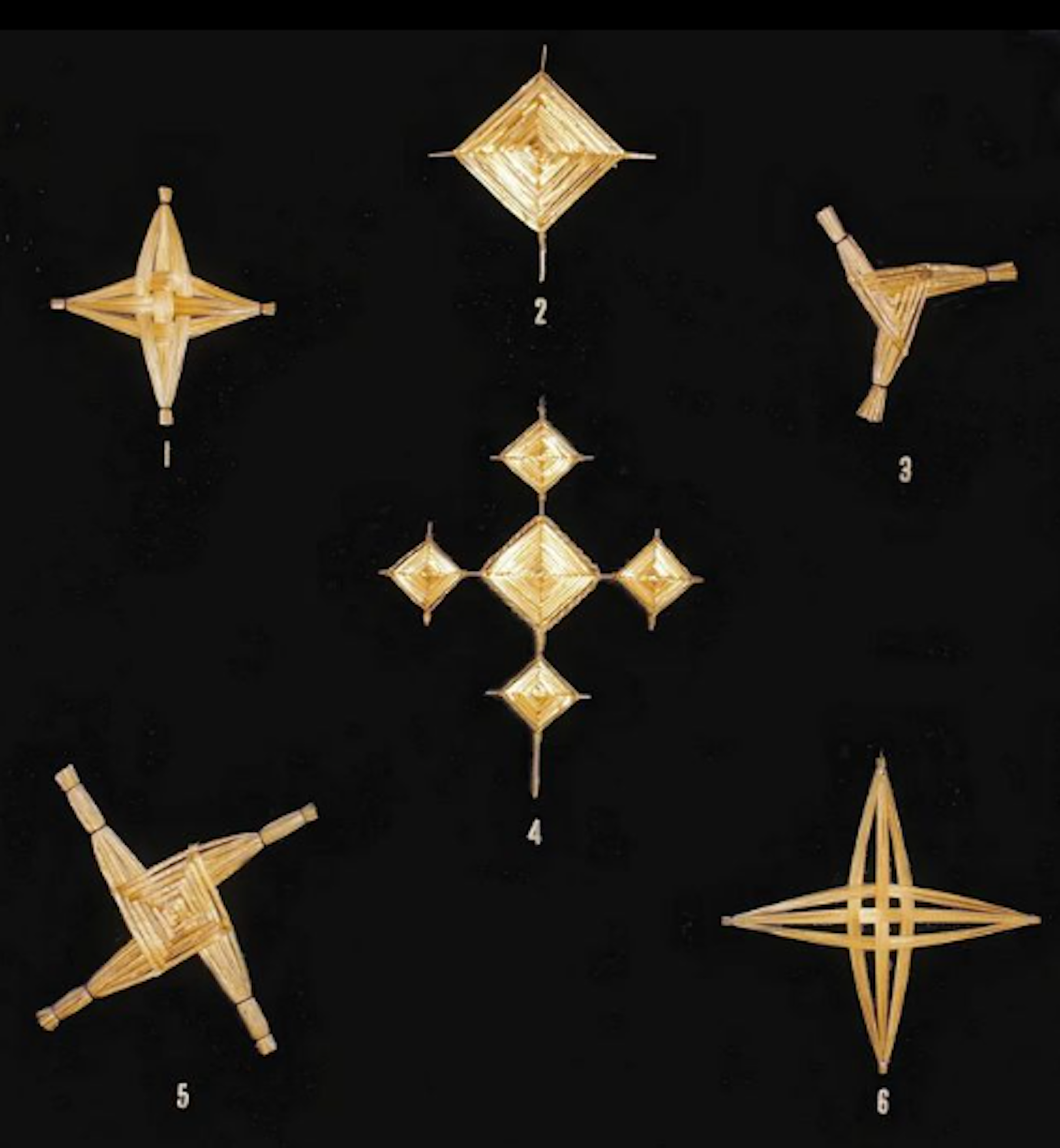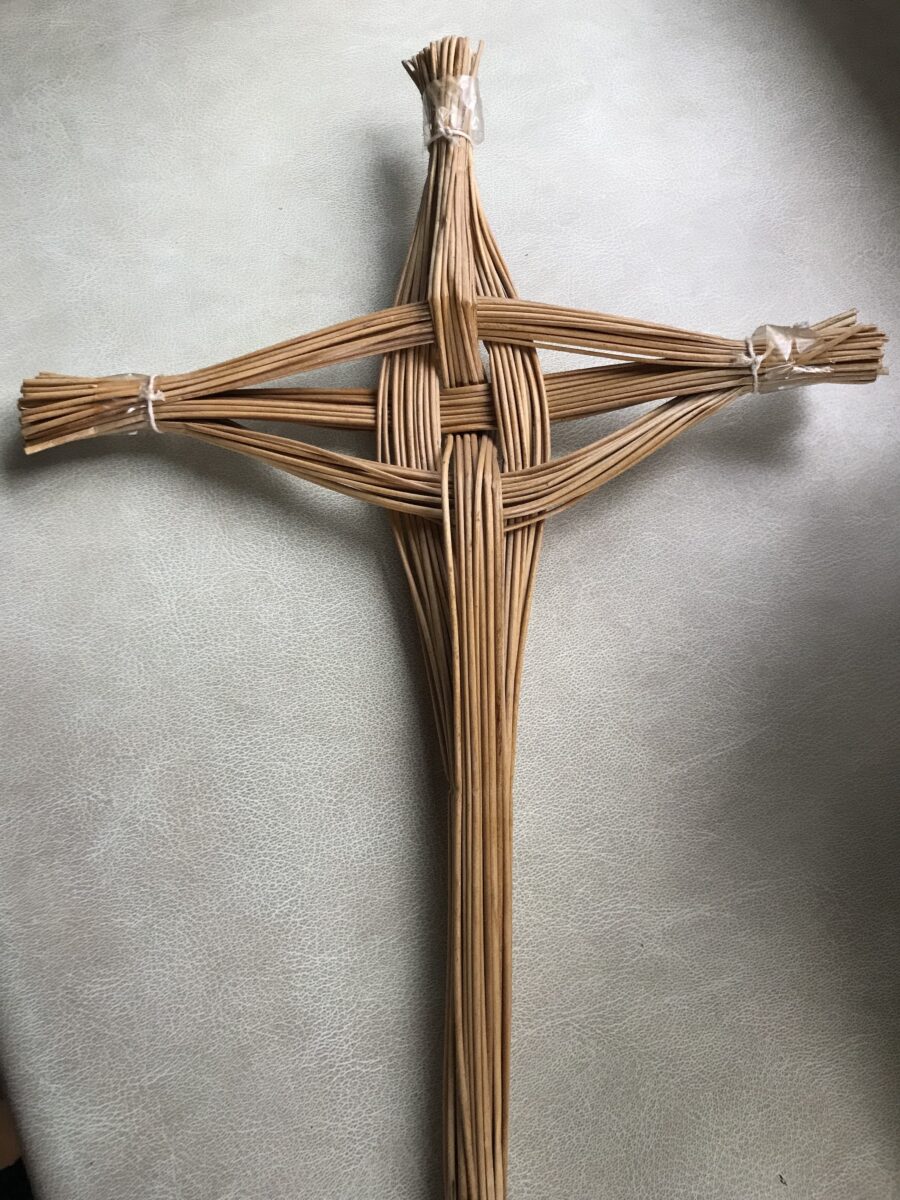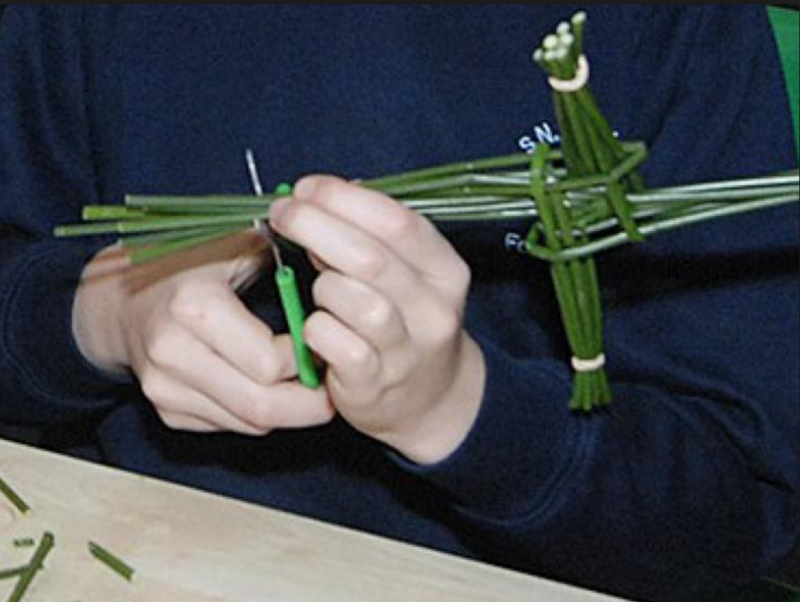As Donegal celebrates St Brigid’s Day, we take a look at the construction of the famous rushwork crosses.
Cross making is one of the most widely known customs associated with the feast, with a number of events taking place around the count last night.
In an interesting article posted this week on their Instagram page, The National Folklore Collection gives an outline of the different styles.

Photograph showing a selection of St. Brigid’s crosses which hang in the front office of the National Folklore Collection, University College Dublin.
The four-armed cross (image no. 5) is nowadays most familiar, although other types were also common.
Simple diamond crosses (2) saw two pieces of wood or twigs fastened in the shape of a cross, before straw was carefully woven around them to form a lozenge.
A more elaborate form involved the fastening of twigs at the extremities of all four arms of the cross, on which smaller diamonds were woven (4). These are somewhat uncommon, but can be found in the Glenfin area.
Three armed crosses (Ulster) were hung in the byre (3).
Another type, made of interlaced rush bows (1, 6) was found in Sligo, Leitrim and south Donegal.
St. Brigid’s crosses were employed to garner the blessing of the saint and to protect the home against fire. They were also believed to protect against lightning.

A beautiful St Brigid’s cross made a number of years ago by the late Seamus Quigley, Stranorlar.
William Monks, Lusk, county Dublin recounts how: “The Saint Brighid’s Cross was not made in north county Dublin within my memory. This is how I first saw it: when I was a boy, workers from County Cavan and County Monaghan used to come to my father’s farm in Spring and Autumn… They lived in a house on the farm. One day there was a fierce thunderstorm, and one of these men got a handful of straw and made a Saint Brighid’s Cross to save the house from being struck by lightning. When the storm was over I asked him to teach me how to make the crosses, and he did.”
Crosses were often constructed with some degree of ceremony. Ordnance Surveyors working in county Derry in the 1830s noted that: “A strone or large cake of oatbread is made in the shape of a cross. The rushes are thrown on the floor, and the strone placed on the rushes. All kneel round the rushes and the bread, and at the end of each short prayer a piece is taken off the strone by each person and eaten. When all is eaten the crosses are made, and when blessed by the priest or sprinkled with holy water, are placed over the door, usually by the third day after the Feast, in the hope that the family may have a plentiful supply of bread until that time twelve months, and in honour of St. Bridget.”
Tags:







